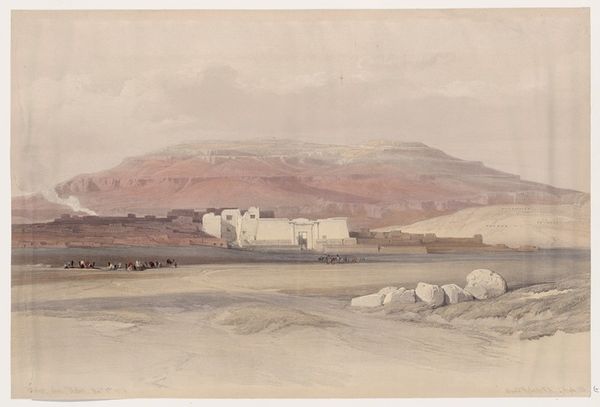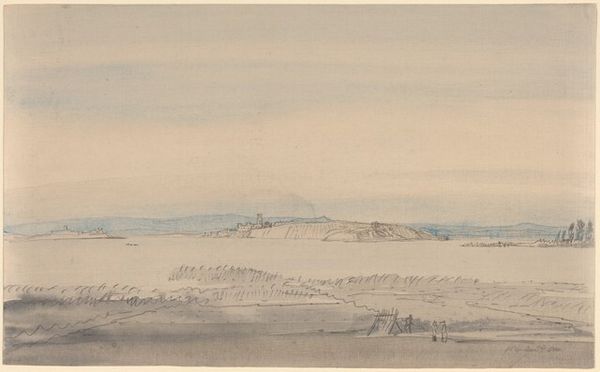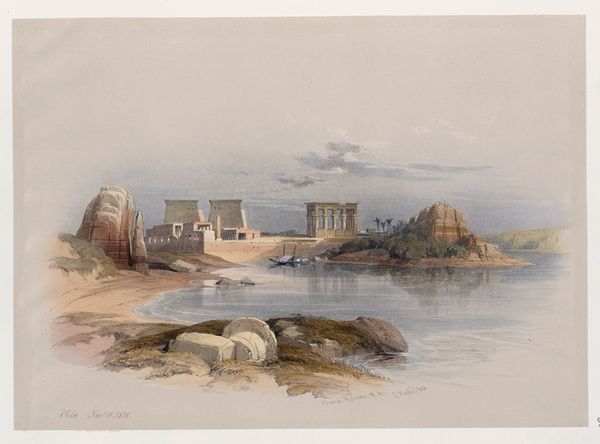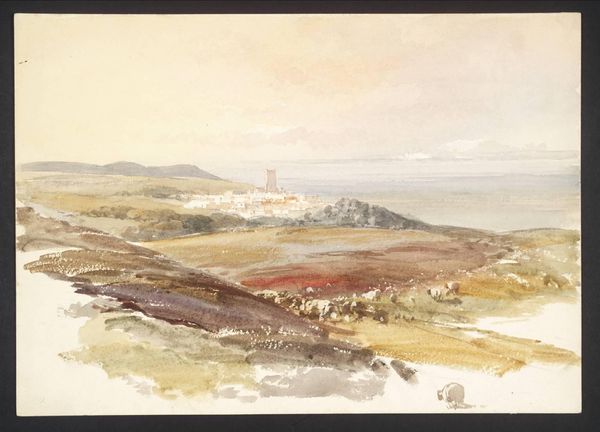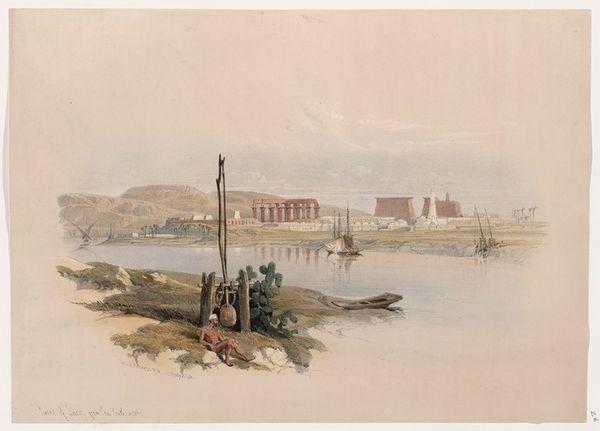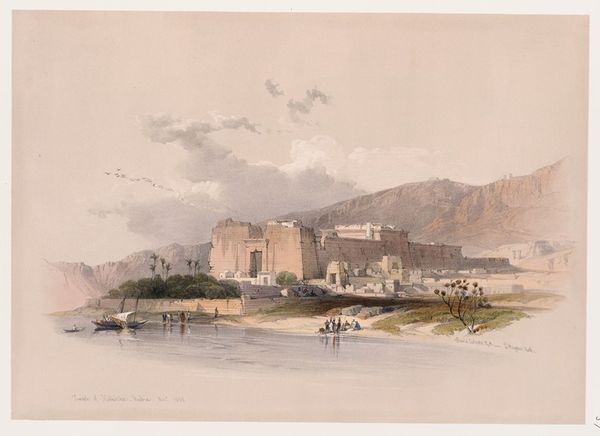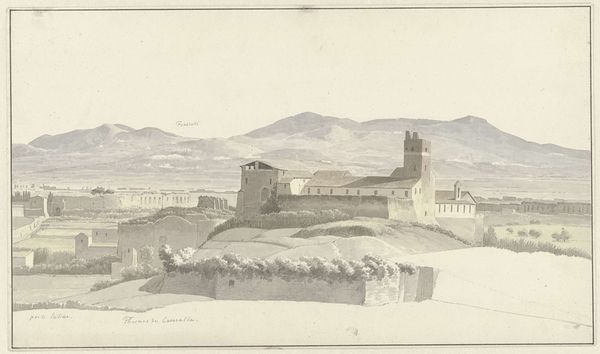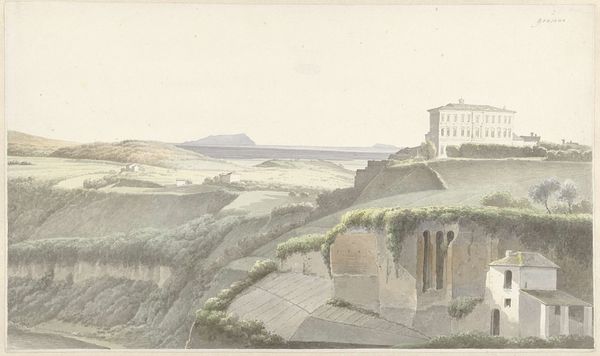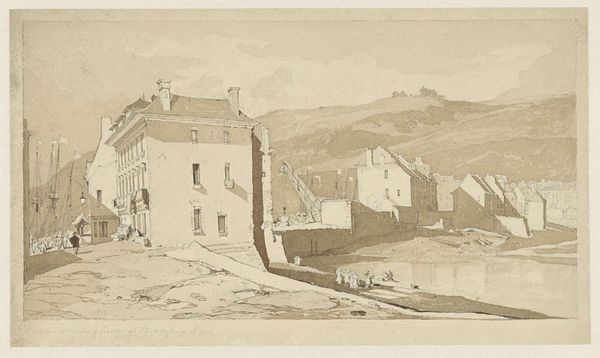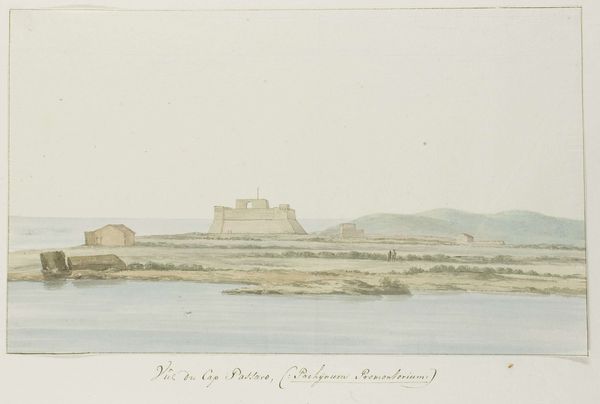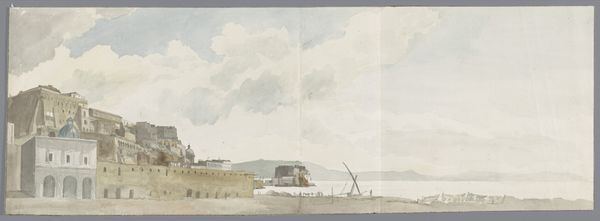
painting, watercolor
#
painting
#
landscape
#
ancient-egyptian-art
#
watercolor
#
ancient-mediterranean
#
romanticism
#
history-painting
#
watercolor
Copyright: Public Domain: Artvee
Editor: This is David Roberts’s watercolor painting, Karnak, from between 1846 and 1849. There’s a striking contrast between the vast landscape and the small figures, a sense of time stretching back millennia. What catches your eye when you look at it? Curator: The symbols woven into this image resonate deeply. Consider the ruins themselves. What do ruins signify across cultures, across time? Editor: Decay? The passage of time and…loss? Curator: Precisely. But also resilience, a ghost of grandeur. Roberts’s choice of Karnak isn’t accidental. Think of Ancient Egypt – a civilization obsessed with the afterlife, with eternal recurrence. Notice the way he renders the light; do you see how it bathes the scene? Editor: Yes, a kind of golden glow. Curator: That's not just about aesthetics, is it? Light is a powerful symbol in nearly every culture: enlightenment, divine presence, knowledge… Roberts subtly imbues Karnak with that symbolic weight, almost painting a dream rather than just a scene. And consider those tiny figures walking towards the temple, do you think that they are on donkeys or camels? Editor: Camels, maybe. But, as tiny as they are, I think their presence invites viewers into the historical narrative depicted. Curator: Absolutely. Their journey mirrors our own – a pilgrimage toward understanding the past. Think about the act of looking itself: Roberts is presenting his vision of Karnak and Egypt to his British audience in a new and changing world. Is this record-keeping, orientalism, or a meditation on how civilizations rise and fall? Editor: It’s a bit of all those things! It makes me think about how every image carries a mix of intentions. Curator: Exactly! Each a cultural artifact with the weight of history encoded within it. Fascinating isn't it?
Comments
No comments
Be the first to comment and join the conversation on the ultimate creative platform.
